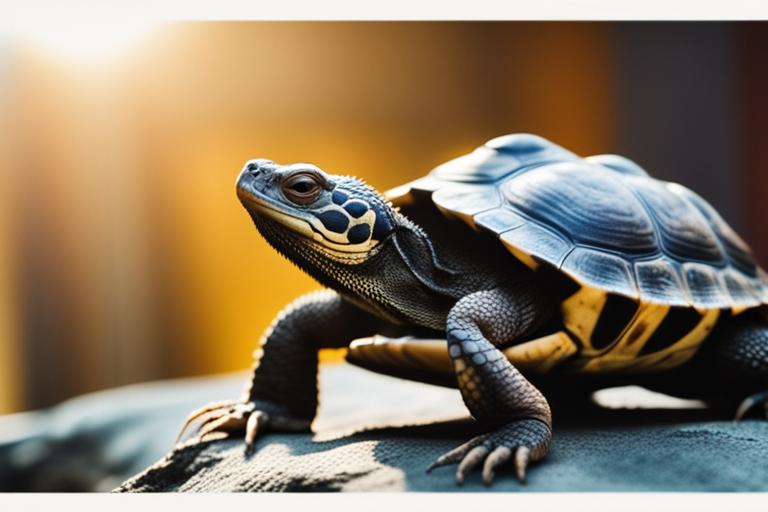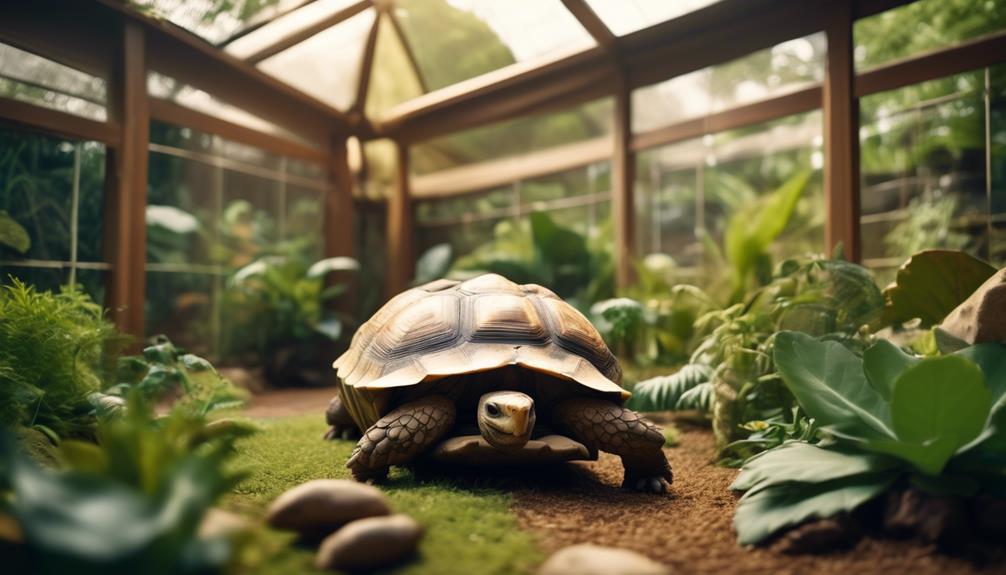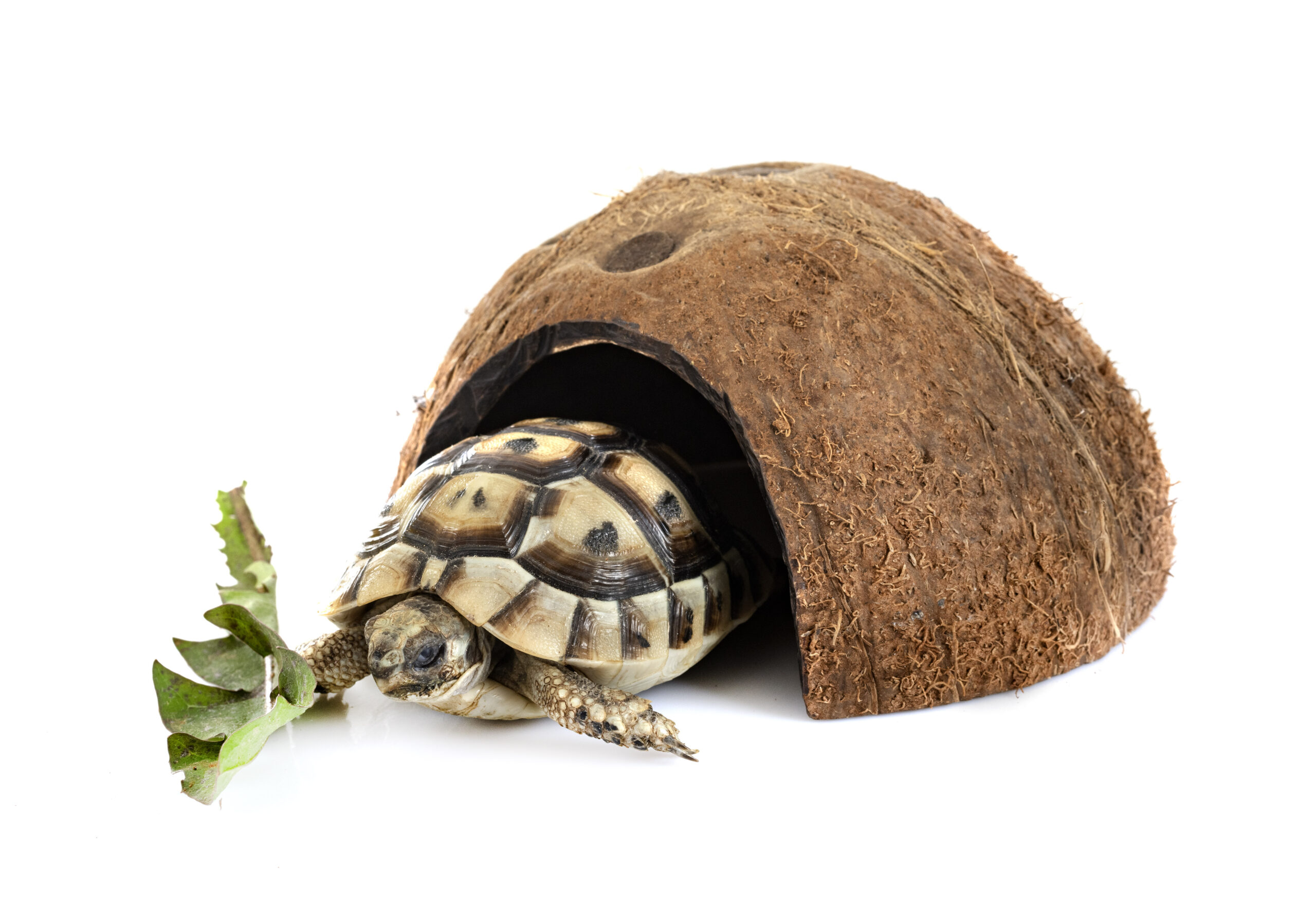If you’re considering getting a tortoise as a pet, it’s important to understand their biology and care requirements. One of the most commonly asked questions about tortoises is whether they are cold-blooded. In this article, we’ll explore the answer to this question, the implications of their biology, and how to care for them properly.
Understanding Tortoise Biology
| Tortoise Species | Average Lifespan | Size | Diet | Habitat | Temperature Range |
|---|---|---|---|---|---|
| Russian Tortoise | 40-60 years | 6-10 inches | High-fiber, low-protein diet with a variety of leafy greens, vegetables, and fruits | Dry, arid habitats with plenty of hiding spots and areas to burrow | 75-85°F during the day, 65-75°F at night |
| Sulcata Tortoise | 70-100 years | Up to 30 inches and 150 pounds | High-fiber, low-protein diet with a variety of leafy greens, vegetables, and fruits | Large, outdoor habitats with access to both sun and shade, hiding spots, and areas to burrow | 90-100°F during the day, 70-80°F at night |
| Leopard Tortoise | 50-100 years | Up to 18 inches | High-fiber, low-protein diet with a variety of leafy greens, vegetables, and fruits | Dry, arid habitats with hiding spots and areas to burrow | 75-85°F during the day, 65-75°F at night |
| Red-Footed Tortoise | 30-50 years | Up to 16 inches | High-fiber, low-protein diet with a variety of leafy greens, vegetables, and fruits | Rainforest habitats with access to both sun and shade, hiding spots, and areas to climb | 75-85°F during the day, 65-75°F at night |
Tortoises are land-dwelling reptiles that belong to the Testudinidae family. They are known for their hard, protective shells and slow, steady movements. Tortoises are herbivores and can live for several decades, with some species living up to 100 years.
Tortoises have a unique ability to retract their limbs and head into their shell for protection. Their shells are made up of two parts: the carapace (upper part) and the plastron (lower part). The shell is not only a protective covering but also serves as a form of temperature regulation.
It’s important to note that tortoises are different from turtles, which are aquatic or semi-aquatic reptiles with flatter, more streamlined shells.
Tortoise Cold-Bloodedness
- Tortoises are indeed cold-blooded animals.
- Their behavior, habitat, and diet are affected by this biological feature.
- Proper temperature regulation is crucial for their health and must be monitored in captivity.

Understanding Cold-Blooded Animals
Cold-blooded animals, or ectothermic animals, have body temperatures regulated by their environment. This means that their body temperature fluctuates depending on the temperature of their surroundings. Cold-blooded animals rely on external heat sources to warm up their bodies, such as basking in the sun, lying on a warm surface, or moving to a warmer location.
While being cold-blooded has its benefits, such as being more energy-efficient and not needing to eat as much, it also has drawbacks. Cold-blooded animals are more sensitive to changes in temperature and can become sluggish or even die if their body temperature drops too low.
Examples of other cold-blooded animals include snakes, lizards, and frogs.
Are Tortoises Cold-Blooded?
Yes, tortoises are cold-blooded animals. Their body temperature is regulated by their environment, and they rely on external heat sources to warm up their bodies. In the wild, tortoises seek out sunny areas to bask in and may even dig burrows to escape the heat of the day. In captivity, it’s important to provide a suitable habitat that includes a basking area with a heat lamp or other heat source.
Tortoises are sensitive to changes in temperature. If their body temperature drops too low, they can become sluggish and may stop eating. It’s important to monitor the temperature of their habitat and provide additional heat sources if necessary.

The Importance of Temperature Regulation for Tortoises
Temperature regulation is crucial for the health and well-being of tortoises. Their metabolism, digestion, and overall health are all affected by their body temperature.
When a tortoise’s body temperature is too low, their metabolism slows down, which can affect their digestion and ability to absorb nutrients. This can lead to health problems such as digestive issues, respiratory infections, and even death.
On the other hand, if a tortoise’s body temperature is too high, they can become dehydrated and may even suffer from heat stroke. It’s important to provide a suitable habitat with areas for basking and cooling down.
Tortoises have several ways of regulating their body temperature. They can move to warmer or cooler areas, bask in the sun, or seek shade. They can also adjust their body position to expose more or less of their body to the sun.
In captivity, it’s important to provide a suitable habitat that includes a basking area with a heat lamp or other heat source. It’s also important to monitor the temperature and humidity levels of their habitat and make adjustments as necessary.
Caring for Cold-Blooded Tortoises
Caring for cold-blooded tortoises requires effort and research. Here are some tips for providing the best possible care for your tortoise:

Creating a Suitable Habitat
Tortoises require a habitat that provides both warmth and shade. This can include a basking area with a heat lamp or other heat source, as well as a cooler area for them to retreat to. The habitat should also include hiding spots and areas for them to climb on.

Feeding Recommendations
Tortoises are herbivores and require a diet that is high in fiber and low in fat and protein. This can include leafy greens, vegetables, and fruits. It’s important to provide a varied diet and avoid feeding them too much of any one food.
Monitoring Temperature and Humidity Levels
It’s important to monitor the temperature and humidity levels of your tortoise’s habitat and make adjustments as necessary. This can include using a thermometer and hygrometer to ensure that the temperature and humidity are within the appropriate range.
Personal Story: The Importance of Proper Temperature Regulation
As a tortoise owner for over a decade, I have learned firsthand the importance of proper temperature regulation for these cold-blooded creatures. One summer, I accidentally left my tortoise, George, outside in his outdoor enclosure on a particularly hot day. When I returned home from work, I found him lethargic and unresponsive.
Panicked, I immediately took him to the vet. The vet explained to me that George’s body temperature had risen too high due to the extreme heat, causing him to go into a state of shock. After several hours of treatment and monitoring, George thankfully recovered.
This experience taught me the importance of monitoring temperature levels and providing a suitable environment for my tortoise. Since then, I have invested in a high-quality thermometer and made sure to keep a close eye on the temperature in both George’s indoor and outdoor enclosures.
Proper temperature regulation is crucial for a tortoise’s overall health and well-being. As owners, it is our responsibility to provide them with a safe and comfortable living environment that meets their unique biological needs.
Common Mistakes When Caring for Tortoises and How to Avoid Them
Some common mistakes when caring for tortoises include:
- Overfeeding them
- Providing a habitat that is too small or lacks proper heat and lighting
- Not monitoring the temperature and humidity levels of their habitat
- Not providing enough hiding spots or areas for them to climb on
To avoid these mistakes, do research and provide the best possible care for your tortoise.
Conclusion
In conclusion, tortoises are cold-blooded animals that require a suitable habitat and proper temperature regulation to thrive. Understanding their biology and behavior is crucial for providing the best possible care. By following the tips outlined in this article, you can ensure that your tortoise is healthy and happy for years to come.
Answers To Common Questions
Who is a tortoise?
A tortoise is a reptile with a hard shell.
What is the lifespan of a tortoise?
Tortoises can live up to 100 years or more.
How do I take care of a tortoise?
Provide a warm and dry enclosure, fresh water, and a varied diet.
Are tortoises cold-blooded?
Yes, tortoises are cold-blooded animals.
What should I do if my tortoise isn’t eating?
Check the temperature and lighting in their enclosure, and consult a vet if necessary.
But aren’t tortoises boring pets?
Not at all! Tortoises can be fascinating pets with unique personalities and behaviors.







